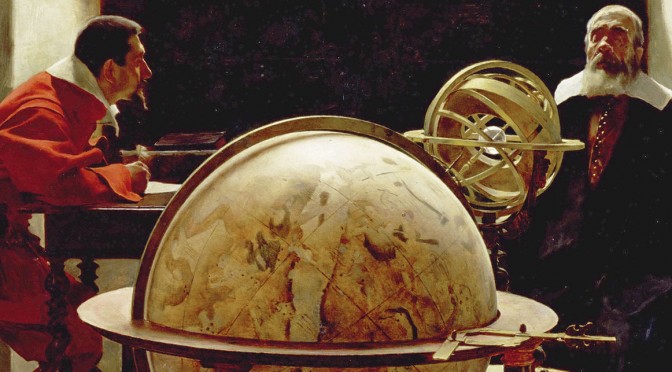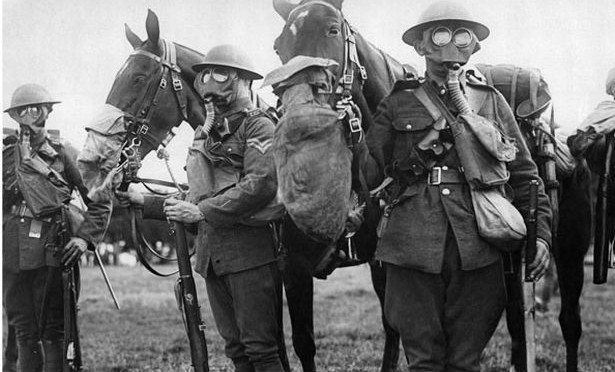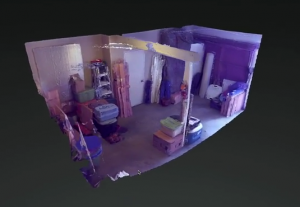This essay is the start to the Personal Theories of Power series, a joint Bridge–CIMSEC project which asked a group of national security professionals to provide their theory of power and its application. We hope this launches a long and insightful debate that may one day shape policy.
When professionals hear the word theory, their eyes tend to glaze over. Most believe theory is purely academic. While understandable, this is only one view of theory. For those of us that will be sharing our personal theories of military power, theory frames our worldview. It changes how we approach problems. Theory shapes how we project power. Over the next couple of days, this will become blatantly apparent as you read how a broad range of national security professionals share their personal theories here on The Bridge. We are presenting our personal theories as a starting point for a wider and deeper national security and strategy discussion.
Theory is crucial to what we do, but it must be consciously acknowledged and tested. In his book The Tacit Dimension, Michael Polanyi suggests “we can know more than we can tell.” This is a useful description of our theoretical beliefs as knowledge; where knowledge, in what is irrevocably lost through unrefined English, is best understood via differentiation in the German tongue as Wissen and Können.[i]
The former, Wissen, is knowledge of awareness; here our particular gestalt is the sum of our biases and blind spots. The latter, Können, is knowledge of discernment; here we typically tend to make order of things within our perception and sub-conscious. These coupled concepts build a bridge between the creative powers of the mind and a value judgment for ordering of the operations of perception. For both these reasons, there is value in the expression of our personal theories. They expose buried subceptions, but are also practical extensions in reproductive and productive reasoning.[ii] Bringing these to the fore is the purpose of The Bridge’s efforts to gather the personal theories that follow this article: for narrow self-reflection, for wider public consideration, for discussion, for questioning, for debate, for recursion, and ultimately for improved practical application. So as a prompt for our writers and readers alike, it is useful to consider the proper construction of theory at the outset of this endeavor.
The Five Functions of Theory and their Impact on Practice
“Strategy and strategies, theory and practice, must be seen as one,” the eminent strategist and theorist Colin Gray suggests, and “[theory] should be able to help educate the realm of practice by assisting people to think strategically.”[iii] There is a unifying nature of theory, in that it informs and educates professionals towards making sense of their circumstances. Towards that end, the archetypical theory has five functions: it defines, categorizes, explains, connects, and ideally, anticipates.[iv]
Theory should provide users a description of what is being done and illuminate the purpose of what is being done.
First, theory defines the field of study. In a sense, it provides via classification a clean break with what its users are considering and what they are not. Inherent in this classification are two additional considerations: definitions ideally should provide users a description of what is being done and illuminate the purpose of what is being done. [v]

Second, theory must categorize its field of study into constituent parts, thus providing some form of typology, for example, differentiating between strategy and tactics, or limited and total war. Ideally, perhaps even scientifically, this typology requires the theorist to establish criteria of exhaustiveness and mutual exclusiveness. This is logical, even purely logical, if impossible. The curb of practicality must provide limits of such logic to the user of theory in favor of pragmatic reasoning. This pragmatic reasoning is what provides grammar to a particular theory. Thus, hopefully familiar to the reader: theory’s logic is not its own—so as to provide consistency with its purpose—but its grammar in what it does is its own. This nature drives theory towards a healthy respect for empiricism rather than just glib idealism. This also means the categorization of a theory is likely never final; it will remain eternally relevant for contemplation because of either new explanations or new grouping, or some combination of both.[vi]
“Explanation is the soul of theory.”

Third, theory provides an explanation of occurrences, and this is theory’s most important function. Harold Winton goes so far as to suggest, “explanation is the soul of theory.” Here within theory is the convergence of both deductive and inductive examination of an object of study. Where the former is focused upon a theory’s empirical testability, the latter is more intuitive and requires creativity to recognize a paradigm shift. While this is the most important aspect of theory, it is also the most transitory. This distinction from the transitory property of categorization results from a recursive flow of analysis and synthesis via observation, hypothesis, and testing.[vii]

Fourth, theory relates and connects together concepts. This part of theory progresses the conception of an object from an existential basis (inherent in the previous functions) to a form of relational construct. Without such a progression towards the latter, theory suffers from a pensiveness that precludes practical application. This relational aspect of theory applies order to things and, in other cases, also describes correlation, or even causation, and it can even be a probabilistic supposition. A familiar example of the relational concept in theory is the elegant Clausewitzian connection between violence and politics.[viii]

Finally, theory anticipates the future. Theory is more than naïve empiricism, which if followed would suggest that our practical application would only be the sum of our accumulated observations. Karl Popper disputes the idea of this aggregation of observations by reminding us that, “[we] do not ‘have’ an observation, but we ‘make’ an observation.” Observation, then, is always preceded by something more theoretical that presupposes expectations for an object under consideration. Thus convinced that empiricism alone is insufficient, to what extent or limit would the prudent theorists extend their judgment from propositions, hypotheses, principles or axioms, to even laws? The complexity of this issue is discussed elsewhere, but it is sufficient to say a theorist must not abandon empiricism either. For, if they do, it is rather axiomatic that theorists will find their theories are merely visions, which I.B. Holley describes as “ideas not systematically prepared for authentication,” or illusions as “ideas that could not survive systematic preparation for authentication,” or at worst as myths where “ideas… exempt themselves from any systematic authentication.” Here it might be forgivable, falling short of being useful theorists to at least being compelling visionaries, but only the most maligned and rare theorist is caught in illusion- or myth-building.[ix]
“Questions are our best friends for the invention and refinement of strong useful theory, and they are the lethal enemies of poor theory.”
Conclusion
Now that we’ve properly wrestled with the Wissen and Können aspects of theory construction, it’s now time to set it out for review and challenge. “Questions are our best friends for the invention and refinement of strong useful theory, and they are the lethal enemies of poor theory,” Colin Gray reminds us. Now its time to put that idea to the test, ever mindful of the Master’s aim for theory:
The primary purpose of any theory is to clarify concepts and ideas that have become, as it were, confused and entangled. Not until terms and concepts have been defined can one hope to make any progress in examining the question clearly and simply and expect the reader to share one’s views.[x]
We hope you enjoy the next few days as our authors explain, likely through their own intellectual struggles, their personal and particular theories, and we challenge you to respond with your questions, counter assertions, and your own personal theories.
[i] Michael Polanyi, The Tacit Dimension, Reissue edition. (Chicago ; London: University Of Chicago Press, 2009), 4–8.
[ii] Ibid., 6–8.
[iii] Colin S. Gray, The Strategy Bridge: Theory for Practice (Oxford ; New York, NY: Oxford University Press, USA, 2011), 15.
[iv] Harold R. Winton, “On the Nature of Military Theory,” in Toward a Theory of Spacepower: Selected Essays (National Defense University Press, 2011), 20–21, accessed April 26, 2014; Harold R. Winton, “A Black Hole in the Wild Blue Yonder: The Need for a Comprehensive Theory of Airpower,” Air Power History (Winter 1992): 3.
[v] Winton, “On the Nature of Military Theory,” 20–21; Winton, “A Black Hole in the Wild Blue Yonder: The Need for a Comprehensive Theory of Airpower,” 3; Antulio Joseph Echevarria, Clausewitz and Contemporary War (Oxford [England]; New York: Oxford University Press, 2007), 38–40.
[vi] Winton, “On the Nature of Military Theory,” 20; Echevarria, Clausewitz and Contemporary War, 38; Paul Davidson Reynolds, A Primer in Theory Construction (New York; London: Allyn and Bacon, 1971), 4–5; W. Brian Arthur, The Nature of Technology: What It Is and How It Evolves, Reprint edition. (New York; London: Free Press, 2011), 2, 21.
[vii] Winton, “On the Nature of Military Theory,” 20–21; Reynolds, A Primer in Theory Construction, 21–23, 26, 42–43; Frans PB Osinga, Science, Strategy and War: The Strategic Theory of John Boyd (Routledge, 2006), 57–64; “The Conceptual Spiral”, August 1992, 22–24, 31, 37–38, accessed May 7, 2014.
[viii] Reynolds, A Primer in Theory Construction, 67–75, 81–82; Carl von Clausewitz, Michael Howard, and Peter Paret, On War (Princeton: Princeton University Press, 1989), 87, 605–610; Winton, “On the Nature of Military Theory,” 21.
[ix] Karl R. Popper, “The Bucket and Searchlight: Two Theories of Knowledge,” in Objective Knowledge: An Evolutionary Approach, Revised edition. (Oxford Eng. : New York: Oxford University Press, USA, 1972), 341–342, 344; Reynolds, A Primer in Theory Construction, 76–81; I.B. Holley, Jr., “Reflections on the Search for Airpower Theory,” in The Paths Of Heaven: The Evolution Of Airpower Theory, ed. Phillip S. Meilinger (Maxwell AFB, AL: Air University Press, 1997), 580, accessed February 6, 2014.
[x] Gray, The Strategy Bridge, 17; Clausewitz, Howard, and Paret, On War, 132.



 Your monthly East Atlantic edition of Sea Control brings you Alex Clarke with a panel on the state of NATO’s defense spending in the UK and Continental Europe, and whether this spending is sufficient to face our modern threats.
Your monthly East Atlantic edition of Sea Control brings you Alex Clarke with a panel on the state of NATO’s defense spending in the UK and Continental Europe, and whether this spending is sufficient to face our modern threats.

